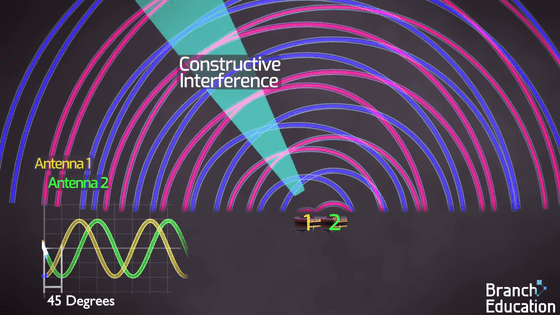How does Starlink's antenna communicate with satellites?

by
SpaceX, a space development company led by Mr. Elon Mask, is developing a service 'Starlink' that provides Internet access using 12,000 artificial satellites. Although it is this service that the same level of communication is possible whether it is in the city or in the countryside if a dedicated receiving antenna is used, I am concerned about how it actually communicates with the artificial satellite flying around the sky. Branch Education , which creates science and engineering videos, explained how Starlink communication is done.
How does Starlink Satellite Internet Work?????☄????-YouTube
Starlink's artificial satellite orbits in a low orbit 550 km above the sky, but its speed reaches 27,000 km / h. The following antenna communicates with an artificial satellite that moves at ultra high speed, with a size of 50 cm in length, 30 cm in width, and 4.2 kg in weight.

The range in which the antenna can capture radio waves well is limited to about 100 degrees, and two-way communication is performed with artificial satellites that pass through that range. There is only about 4 minutes to communicate with one satellite, but when one satellite goes out of the range of the antenna, the next satellite comes flying, so there is no problem. The antenna switches satellites to communicate about every 4 minutes and transmits and receives data at a speed of several hundred Mbps.

However, while the artificial satellite responsible for television broadcasting at 35,000 km above the sky can transmit radio waves over a wide range ... ...

At 1/60th the distance, Starlink's satellites have a very limited range.

In order to transmit and receive a large amount of data with low latency, we fly over such a distance. must be thrown straight.

There is also a way to use a motor to adjust the angle, but if the motor continues to run, it will break in about a month, and the accuracy is insufficient to match the satellite flying at a speed of 27,000 km / h. The method that uses the phase of the radio wave is used there.

Looking at the internal structure of Starlink's antenna, the surface of the antenna is divided into six layers ... ...

One of them turns out to be a substrate. A total of 660 microchips, large and small, are arranged on one side of the substrate.

Furthermore, 1280 small hexagonal antennas are arranged on the other side of the board.

This antenna can generate electromagnetic waves radially, but if it's only one, it's weak and it can't reach the antenna in the sky.

However, by generating electromagnetic waves at the same time with two antennas next to each other ......

At certain locations, the strength of signals pointing in the same direction increases.

Also, if the phases of the electromagnetic waves emitted by the antennas are the same, the signal is oriented only in a specific direction ... ...

By shifting the phase, you can strengthen the signal in a specific direction.

By continuously changing the phase of each wave in this way, you can adjust the angle of the wave and freely change the angle in which the signal is strongest. As a result, it seems that communication with artificial satellites in the sky is possible without changing the physical angle of the antenna.

Related Posts:
in Hardware, Posted by log1p_kr







